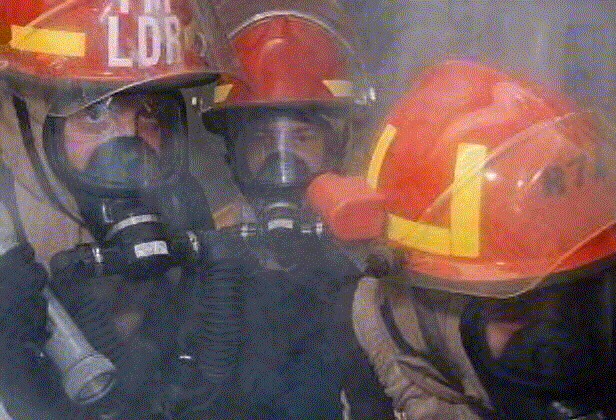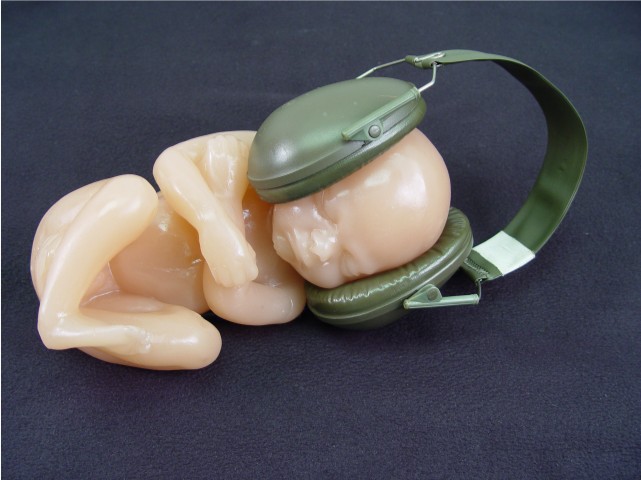Environmental Issues
Thermal Stress
 Fetal enzyme systems may not function properly if subjected to
unusually high temperatures. In laboratory animals, elevation of core
temperature is associated with an increased risk of fetal loss. For this reason, pregnant
women are generally restricted from saunas and Jacuzzis. It is
difficult, however, to elevate one's core temperature by sitting in a
sauna or Jacuzzi, often requiring a very long exposure at very high
temperatures. Fetal enzyme systems may not function properly if subjected to
unusually high temperatures. In laboratory animals, elevation of core
temperature is associated with an increased risk of fetal loss. For this reason, pregnant
women are generally restricted from saunas and Jacuzzis. It is
difficult, however, to elevate one's core temperature by sitting in a
sauna or Jacuzzi, often requiring a very long exposure at very high
temperatures.
The important thing to avoid is elevation of the core temperature.
Any activity which may lead to an elevation of core temperature should
be restricted. This would include sedentary exposure to high ambient
temperatures which would otherwise be tolerated by a non-pregnant
person, or moderate exercise in moderately-elevated temperatures.
Pregnant women are at a disadvantage in hot environments for several
reasons:
-
They have a high metabolic rate because of the fetus and placenta,
generating extra heat.
-
Their surface area to mass ratio is unfavorable. They have
increased their mass without a proportionate increase in surface area,
making it more difficult to dissipate heat.
-
When they vasodilate to shunt blood to their skin for cooling, the
rest of their cardiovascular system is a little sluggish in
compensating, leading to easy fainting.
 Noise Noise
The abdominal wall muffles (attenuates) the noise only
somewhat and these very noisy areas may pose significant problems for
the developing fetus, including hearing loss.
While it is possible to
provide the mother hearing protection against loud and possibly damaging
noises, it is not possible to protect the fetus. There is an
approximately 15 dB attenuation (quieting) of sound as it passes through
the mother's abdomen and is heard by the fetus. This means that a woman
exposed to continuous 115 dB of loud rock music can protect her own
hearing by wearing hearing protection, but the fetus will still be
exposed to continuous 100 dB sound, enough to cause damage. Continuous
exposure to 85 dB and above is considered dangerous to the mother's
hearing.
Decibels |
Source |
20 |
Whisper |
40 |
Library |
60 |
Normal speech |
70 |
Busy street |
75 |
Auto interior at 55 mph |
90 |
Average factory |
100 |
Siren at 30 yards |
115 |
Loud rock music |
120 |
Threshold of pain |
140 |
Jet engine at 30 yards |
|
Pregnant women should wear hearing protection when
exposed to ambient noise levels above 84dBA, including infrequent impact
noise. (So should non-pregnant women and men.)
Brief exposure (5 minutes per hour or less) of
hearing-protected pregnant women to ambient noise above 84dBA in order
to transit high noise areas is probably safe. Prolonged exposure to this
level of noise is not recommended.
Pregnant women should avoid any exposure to ambient
noise greater than 104dBA (corresponding to the need for double hearing
protection), unless absolutely essential for quickly moving through a
high noise area.
Vibration
Low frequency, whole body vibration can be problematic for a developing
pregnancy.
This is the type of shaking vibration one might experience if operating a
jackhammer or driving at high speed over a highway with many potholes. It is
to be avoided during pregnancy.
 Chemicals Chemicals
Organic solvents, such as turpentine, fuel, oils, lubricants, and
paint thinner may have adverse effects on a developing fetus.
The greatest risk comes from ingestion of these solvents, or by
chemical spills with contamination of the skin. Inhalation, though less
likely to delivery significant quantities of the material, should also
be avoided.
It is very important to avoid maternal exposure to lead, cadmium and
mercury.
Cathode Ray Tubes
There is no good evidence that working in front of a CRT (Cathode Ray
Tube) poses any threat for the pregnant woman, either from
electromagnetic radiation (EMR) or from eyestrain.
Ergonomics are important for all sitting personnel, and particularly
pregnant women. Good low back support, correct height for the CRT, wrist
support and proper positioning of the legs (with the thighs flexed
slightly so the knees are at least level with the hips, if not slightly
higher than the hips), will contribute to the comfort and performance of
these personnel. |



